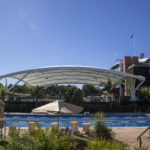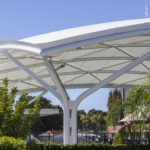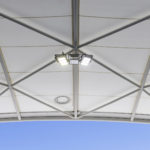Company:
MakMax Australia
Project Details
Fabric 1
FGT-800
Producer/Manufacturer:
Chukoh Chemical Industries Ltd.
Primary Use:
Main Fabric
Engineer Company 1
MakMax Australia
Architect Company
Cox Architecture
Fabrication Company
MakMax Australia
Subcontractor Company
Sky Skills Industries
Project Manager Company
MakMax Australia
Installation Company
Kennet Builders (General Contractor)
Please describe the project specifications
This project was part of Stage Two of the Memorial Drive Redevelopment project, a $44 million investment to rejuvenate the historic Memorial Drive sporting facility into a world-class venue capable of hosting international sporting and entertainment events.
Tennis South Australia approached us, in collaboration with a local Adelaide construction company, to design and install the tensile membrane roof for the new Sunken Show Court as part of the Stage Two redevelopment. The canopy needed to have a similar high-quality look and feel to match the facilities upgraded in the first phase of the redevelopment (completed in 2019).
We proposed a lightweight PTFE membrane roof to cover the Sunken Show Court and seating areas. The canopy extends over the viewing area in front of the Bill Cossey Pavilion, a multipurpose venue that overlooks the show court. The addition of the tensile membrane canopy would protect players and create a comfortable viewing experience for spectators.
Chukoh Skytop FGT-800 PTFE is a dynamic tensile material unmatched for its flexibility, durability and aesthetics, making it the ideal fabric for Sunken Show Court roof. Chosen for its excellent UV protection, light translucency and low surface friction (self-cleaning) properties and boasting a light transmittance up to 15%, FGT-800 PTFE is ideal for sporting facilities as it provides naturally diffused light with minimal shadows. The bright white canopy reflects much of the sun’s energy, which in turn helps to create a comfortable atmosphere underneath the canopy, keeping athletes and spectators cool in extreme heat and dry during inclement weather.
The scope of this project included the design, supply and installation of the PTFE membrane roof, including gutters and fascia, roof safety lines, access hatch, siphonic system and downpipes. The fabric panels were created using high translucency PTFE coated fibreglass and are supported by painted steel beams.
For the project, a parametric 3D stick-line model using Grasshopper/Rhino was used by our design team as a coordination document with the client’s designer. With the short deadline for coordination and ease of updating, the decision to incorporate parametric design was pivotal in the success of the project. By the end of the design phase, the 3D model had been revised several times, requiring minimal inputs and resulting in speedy revisions. The 3D model was subsequently used by the steel fabricator as a basis for their modelling. The construction 3D model was then reviewed by all parties and approved prior to fabrication – this led to great time-savings during the QA process and subsequent steel install.
We based our canopy design on a diagrid support shell rather than a truss design to provide the structure with a lower overall canopy profile. By reducing the amount of supporting steel sitting below the membrane, the canopy allows for a much higher space over the net (much needed for those back-court lob shots by the players). To support a wide-open canopy with only 4 corner supports, a triple-column pillar with 3-point diagonal struts evenly balance loading, while maintaining the elegant, lightweight look and feel of the structure.
Custom designed low-profile gutters were integrated into the outer facia, while syphonic sumps located in each corner are able to collect and channel a large amount of rainwater off the roof. This ensures the minimal gutter area can sustain volume of rainwater flow off the large surface of the roof.
Access to the top of the roof is made possible using an innovative access hatch. Located above the viewing area and accessible via an EWP, the custom roof portal frame is located in the PTFE membrane, and not attached to a support beam. The access hatch is so lightweight, it is entirely supported by the tensioned PTFE membrane.
One of the main challenges to overcome in the construction phase of the project was gaining site access. Built as part of Stage 2 of the Memorial Drive redevelopment, the Sunken Court site had significant constraints on all sides with Adelaide Oval to the east, practice cricket nets to the north, Centre Court and War Memorial Drive to the west, and the carpark to the south. It was important to protect the newly renovated court surface and minimise damage from heavy vehicles and cranes accessing the site. This called for a creative solution to cover the courts surface with rubber mats and plywood or steel plates to distribute the loads, creating an access way from the northern grass courts. This allowed us to bring in the lightest slew crane and EWP to install the structure and canopy.
Built with incredibly tight deadlines in between border closures and COVID outbreaks, the team managed to complete the job by the deadline ready for 2022 Adelaide International Tournament in January.
What is unique or complex about the project?
Creating a second covered show court for the Memorial Drive Tennis Centre in Adelaide, the 1400m2 Sunken Court Canopy is another stunning addition to the historic tennis club and the second project we’ve been involved with Tennis South Australia.
Working hand-in-hand with the overall project architect, as well as the prime contractor on both stage 1 and stage 2 of the redevelopment works, this project was an amazing example of collaboration and continued working relationships. Faced with tight project schedule and definitive deadlines (the project had to open in time for the Adelaide International Tennis tournament), this project gave us the opportunity to further explore parametric design and the ability to make quick and easy changes to the pre-construction design to meet the engineering challenges of the structure.
Lightweight, elegant and a beautiful structure, this is a tensile fabric structure project we are immensely proud of.
Content is submitted by the participant. IFAI is not responsible for the content descriptions of the IAA award winners.
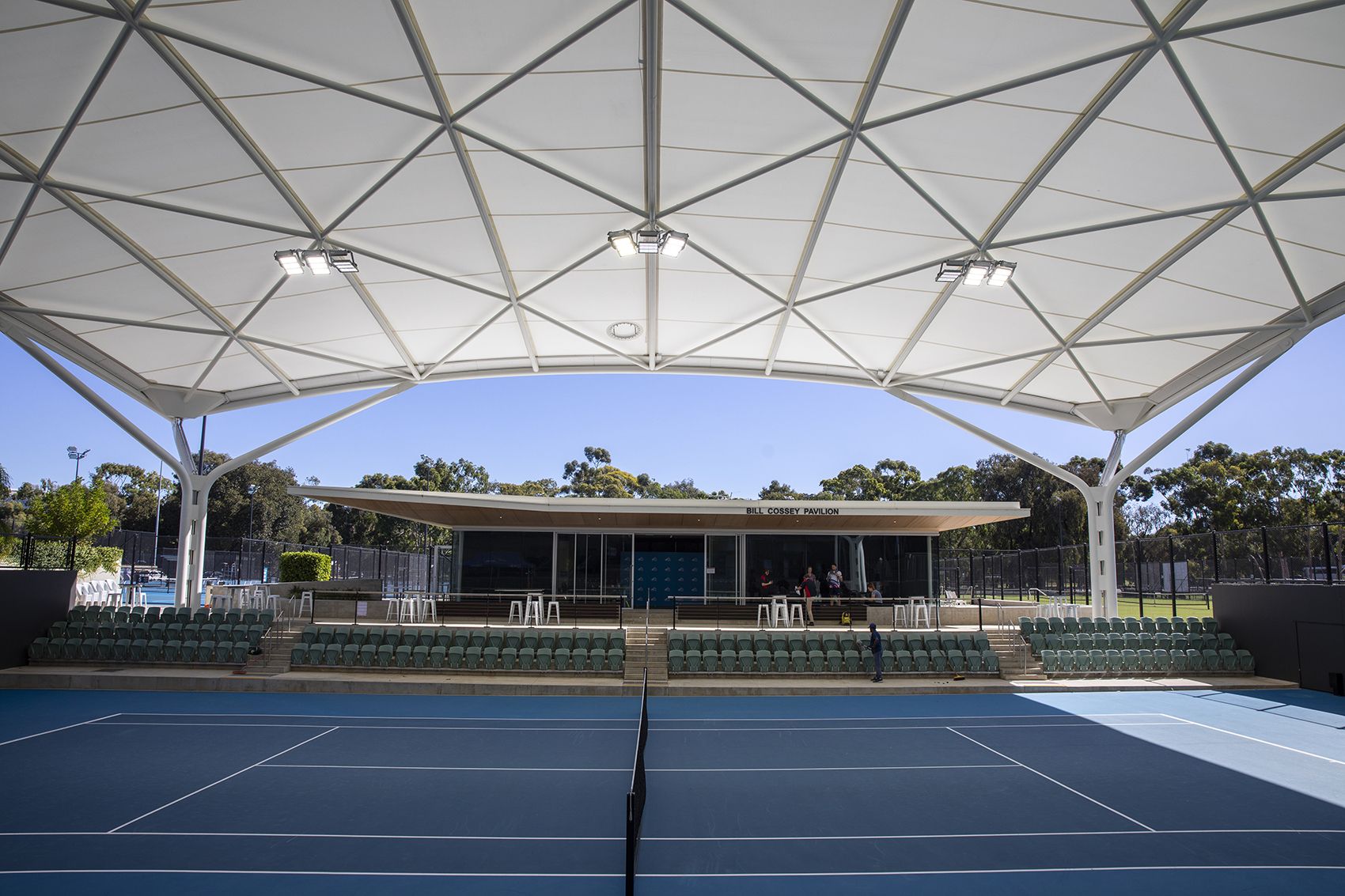
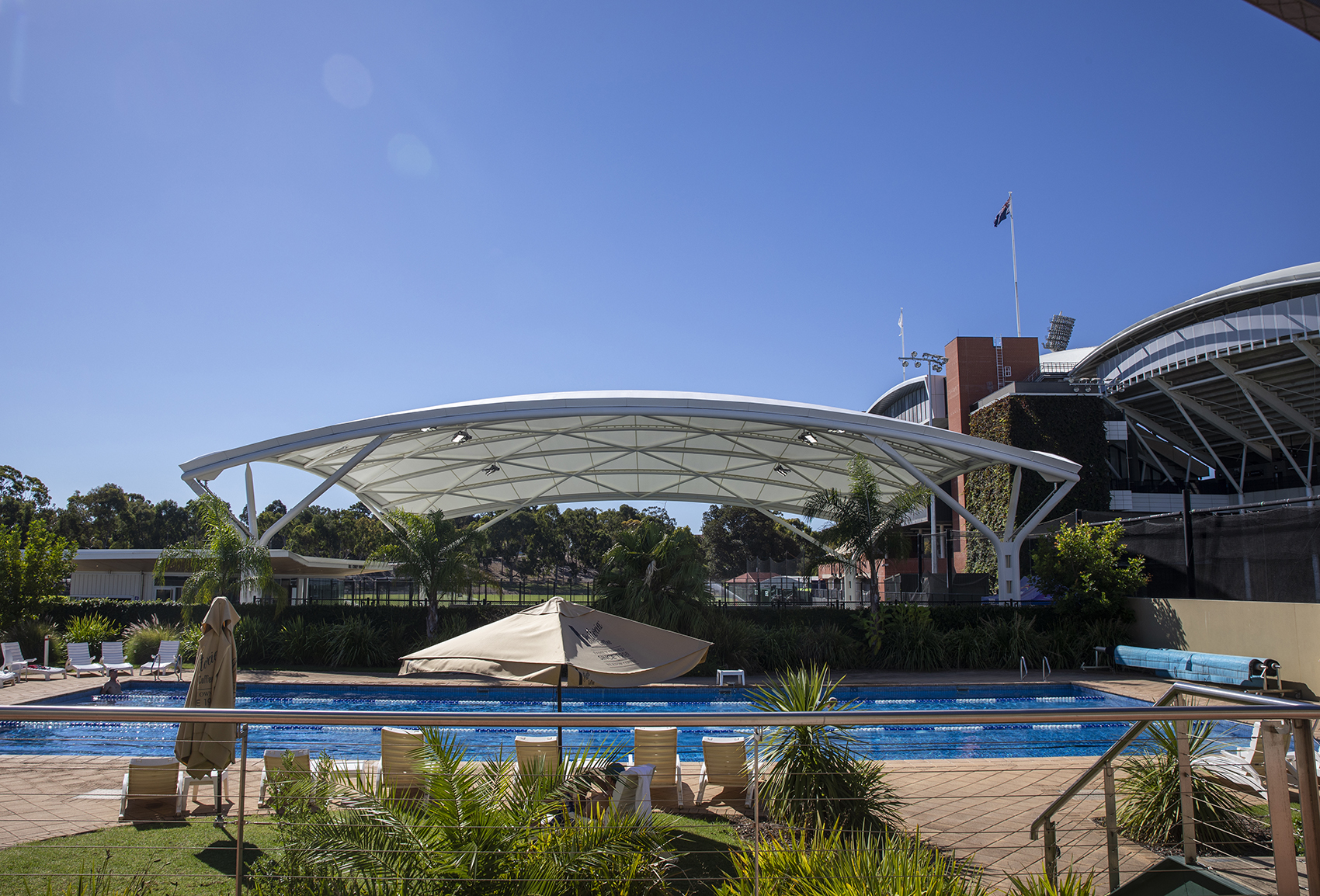

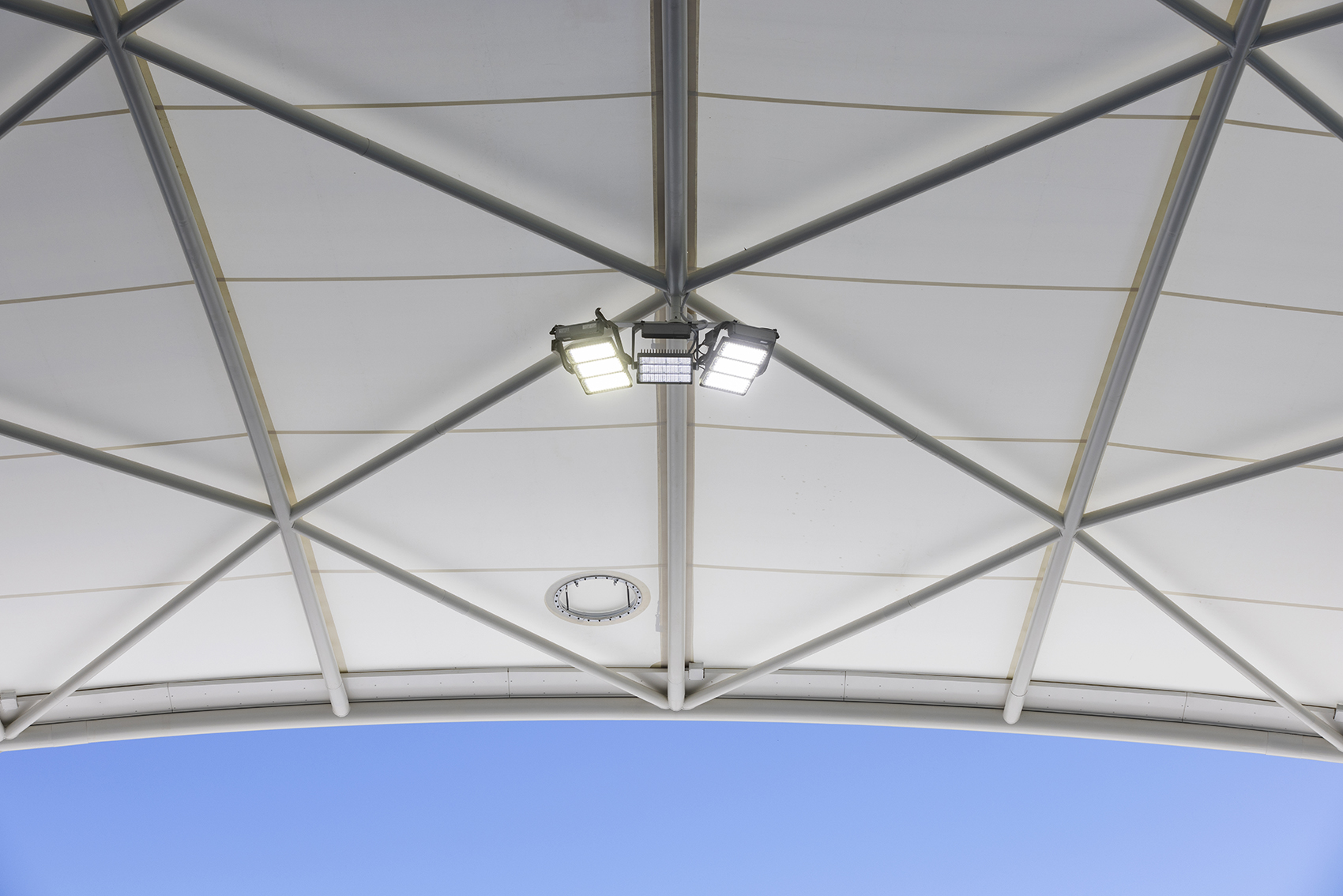
 TEXTILES.ORG
TEXTILES.ORG




